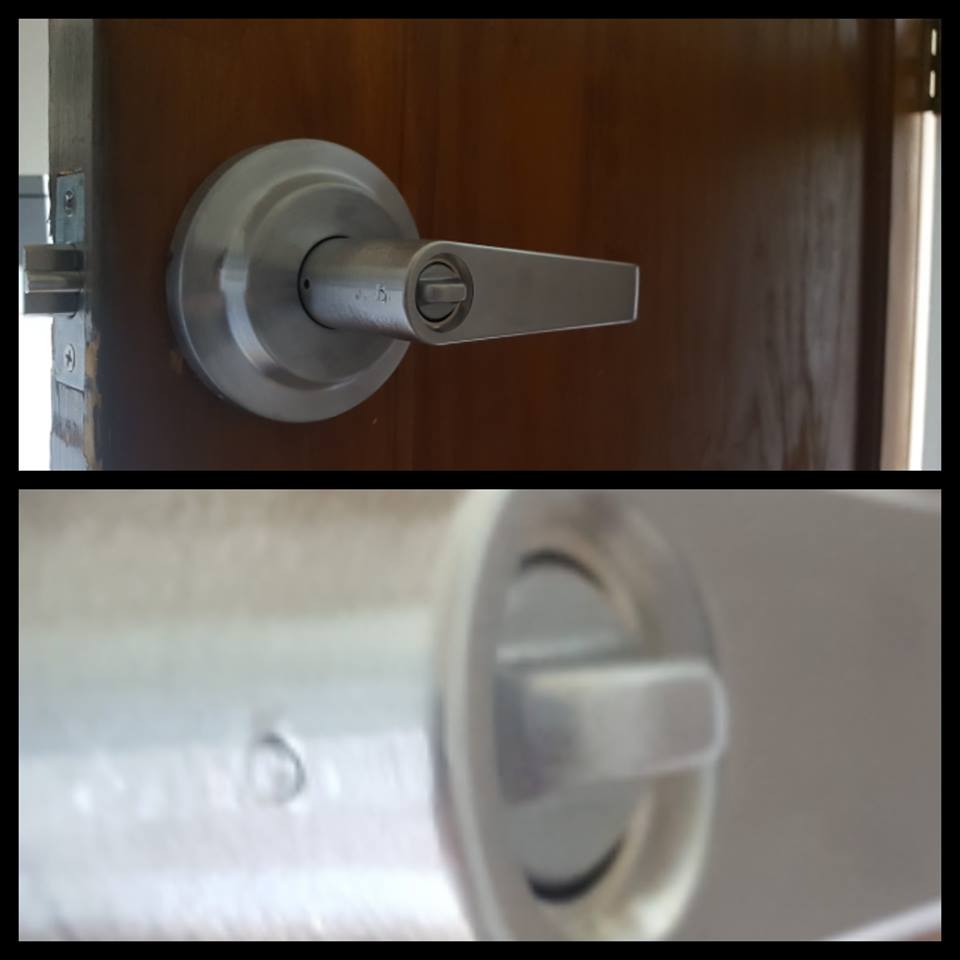A property manager called me because the door to an apartment building’s laundry room had been forced open and he needed me to replace the knob. This has been happening a lot lately in Seattle. People are after those quarters.
I put on a Grade-2 commercial clutched entry lever. When a standard (non-clutched) lever is locked, it feels so to the touch; it’s rigid and you can’t push down on it to open the door. With a clutched lever, if the door is locked the lever can still be pressed down but it won’t pull the latch to open the door. This prevents a large man from putting all his weight on the lever and forcing the door open. Clutched levers are appropriate for exterior doors and rigid ones are a little better for individual offices inside a building. The clutched ones are more secure but carry a greater risk of lockouts, as it’s easy for the inattentive user to mistakenly think they’re unlocked.
It occurred to me after I installed and rekeyed the new lock that the door really needed a storeroom lever, not an entry lever. Storeroom levers automatically lock every time they close and they cannot be left unlocked, though they can always be freely opened from the inside. I didn’t have a storeroom lever in my van. Instead I modified the entry lever I’d already installed.
On the inside half of the lever, I pushed and turned the push-turn button to the locked position. Then I drilled a tiny hole from the outside of the lever straight through the depressed push-turn button. Next I drove a small finish nail into the hole, cut it off, peened the end, and filed it smooth with the surface of the lever. It left a little blemish on the hardware. With that nail through the push-turn button, no one can ever unlock that door and leave the room unsecured. The lock now functions like a storeroom lever.
This was dumb and I shouldn’t have done it. The lock will now be very hard to service or remove from the door. The first step to disassembling a lock like this is to separate the inside lever from the chassis. Well, that button is part of the chassis, and it’s now semi-permanently fixed to the inside lever. If someone ever wants to take the lock off that door, they’ll have to figure out a way to dig the nail out or they’ll need to saw off the inner lever.
If I’d exercised a little more forethought, I might have drilled my hole in from the top of the lever and had it come clear out the bottom side. Then if the lever ever needed to be removed, one could lightly tap the nail from the top to have it come out the bottom. But really I should have just used the right piece of hardware in the first place.
The good news is that the lever should last for at least a couple of decades, well beyond the point that some developer decides to gut and remodel that building. And if someone does need the lever removed, I’m the guy they’ll call anyway. I’ll have a headache of a job on my hands but I won’t need to ‘fess up to my mistake.

 Commercial
Commercial 


